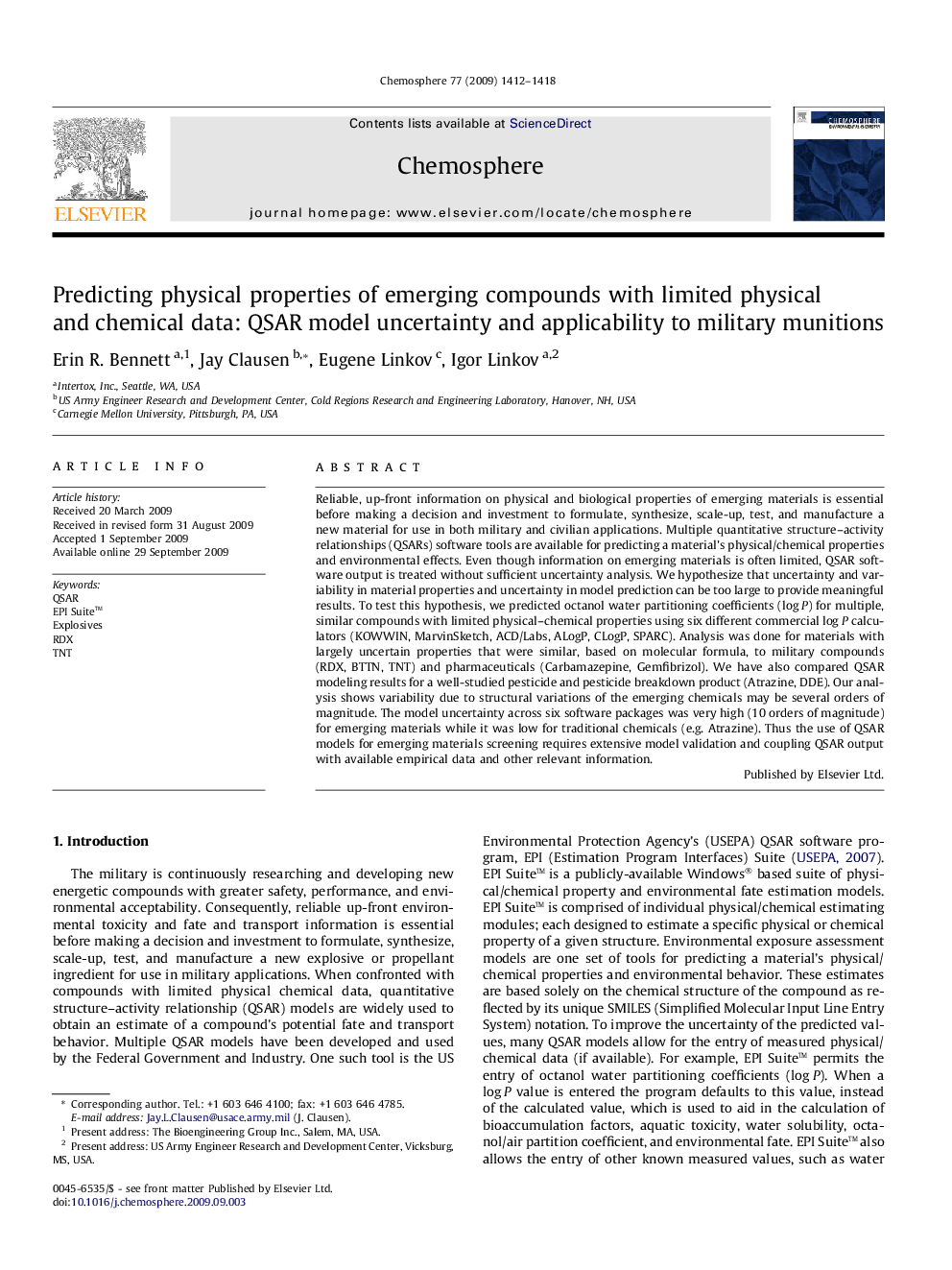| کد مقاله | کد نشریه | سال انتشار | مقاله انگلیسی | نسخه تمام متن |
|---|---|---|---|---|
| 4412212 | 1307628 | 2009 | 7 صفحه PDF | دانلود رایگان |

Reliable, up-front information on physical and biological properties of emerging materials is essential before making a decision and investment to formulate, synthesize, scale-up, test, and manufacture a new material for use in both military and civilian applications. Multiple quantitative structure–activity relationships (QSARs) software tools are available for predicting a material’s physical/chemical properties and environmental effects. Even though information on emerging materials is often limited, QSAR software output is treated without sufficient uncertainty analysis. We hypothesize that uncertainty and variability in material properties and uncertainty in model prediction can be too large to provide meaningful results. To test this hypothesis, we predicted octanol water partitioning coefficients (log P) for multiple, similar compounds with limited physical–chemical properties using six different commercial log P calculators (KOWWIN, MarvinSketch, ACD/Labs, ALogP, CLogP, SPARC). Analysis was done for materials with largely uncertain properties that were similar, based on molecular formula, to military compounds (RDX, BTTN, TNT) and pharmaceuticals (Carbamazepine, Gemfibrizol). We have also compared QSAR modeling results for a well-studied pesticide and pesticide breakdown product (Atrazine, DDE). Our analysis shows variability due to structural variations of the emerging chemicals may be several orders of magnitude. The model uncertainty across six software packages was very high (10 orders of magnitude) for emerging materials while it was low for traditional chemicals (e.g. Atrazine). Thus the use of QSAR models for emerging materials screening requires extensive model validation and coupling QSAR output with available empirical data and other relevant information.
Journal: Chemosphere - Volume 77, Issue 10, November 2009, Pages 1412–1418